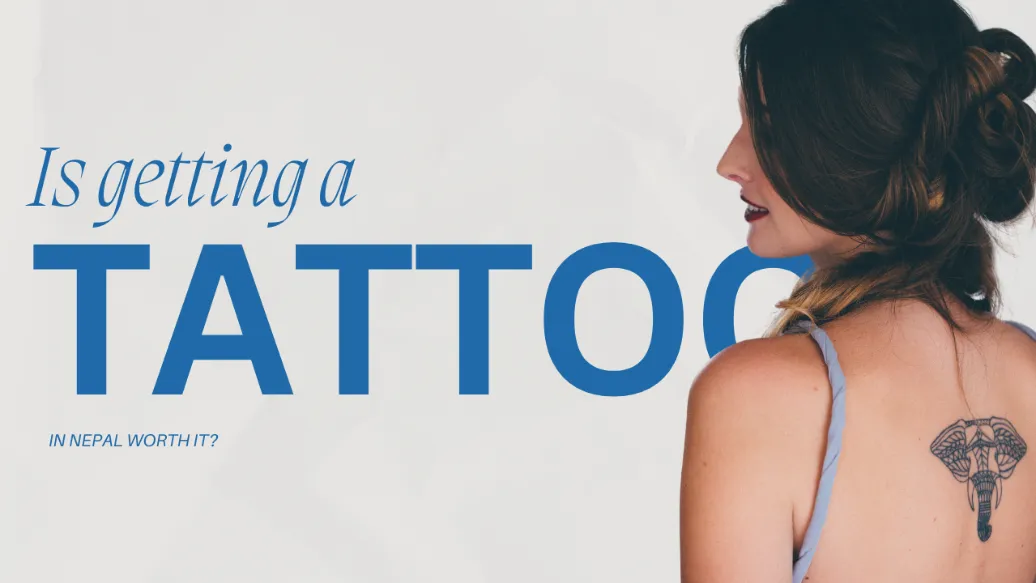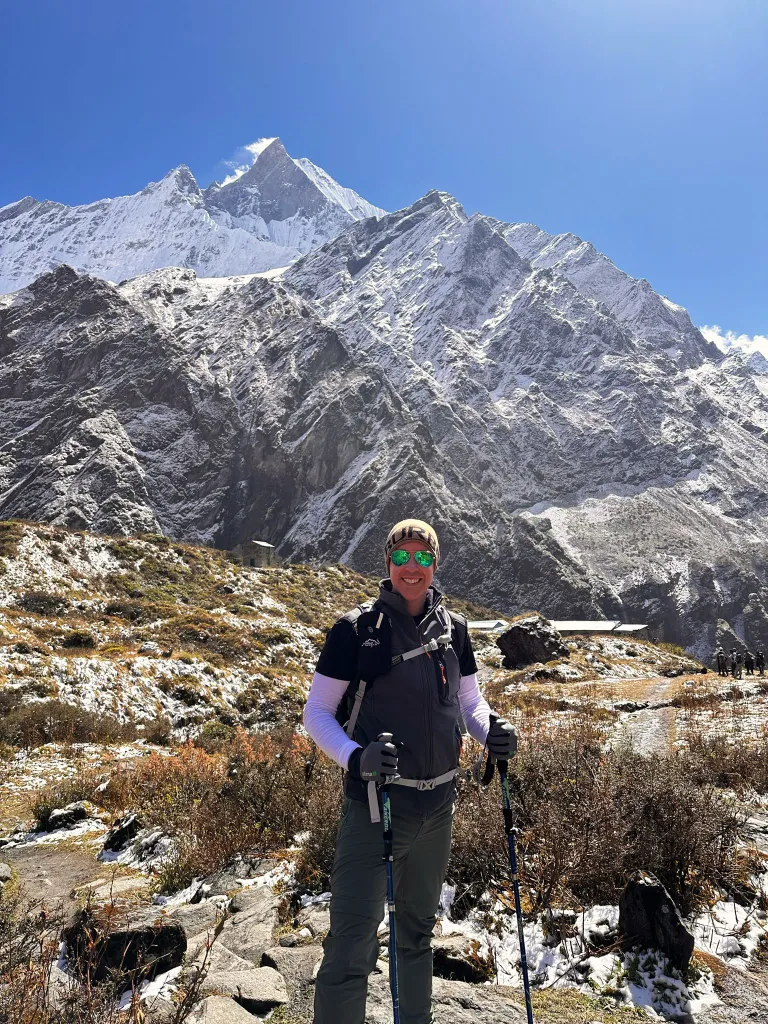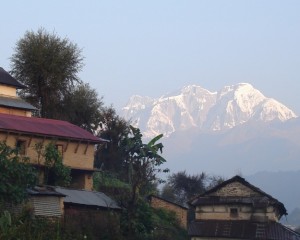Is Gokyo Ri Worth It?
The Gokyo Valley Trek is among the exhilarating adventures in the lap of the Himalayas. Following the beautiful trails of the Everest Base Camp, the journey will unfold the hidden gems of the remote Everest region for trekkers, filling their lives with unforgettable moments.
Walking through the diverse landscapes and lush forest, crossing the wooden suspension bridge, encountering the endangered species of Sagarmatha National Park and cheering the smiles of the peaks Mount Everest, Lhotse, Ama Dablam, Nuptse, Makalu, Nuptse and Cho Oyu. Crossing the diverse terrain and passing by the cultural artefacts of the ancient Sherpa culture, one can immerse oneself in their alluring cultures.
While it is one of the memorable adventures in the Himalayas, many people want to know more about the Gokyo Lake Trek. We have compiled all the information for you, so let's get right into it.
Overview of Gokyo Valley Trek
The Gokyo Valley Trek is one of the finest routes through the lap of Everest. It offers the chance to immerse yourself in the beauty of the remote region's natural and cultural gems. After a scenic flight to Lukla and 360-degree views of the Kathmandu valley, you start your official trek journey.
Now starts your official trek, walking on the well-maintained trail of Everest, passing by the Dudh Koshi river, and reaching the Namche Bazaar. Further, please make your way to even more remote regions of Tengboche following the turbid water streams and reach Ngozumpa Glacier and the natural basin between the snow-capped peaks that wraps the Gokyo Valley in its arms, along with the series of serene lakes and villages. Throughout your route, you will pass through the flapping chorten, spinning prayer wheel, and mani walls encrypted by "Om Mani Pemba Om".
Likewise, the monasteries are distributed throughout the region, where you get to learn more about the preserved customs and traditions of the Sherpa people.
The physical challenge for trekkers is crossing the glaciers. But the rewards are many that uperb scenery and wildlife of Sagarmatha National Park, the natural beauty and sublime setting of Gokyo Valley and its crystalline lakes, and the superb and virtually unparalleled panoramic views of Everest, Lhotse, Makalu, Cho Oyu and a host of other Himalayan giants from the prospect of Gokyo Ri (5360 meters).
Aside from this, there are several highlights for you to enjoy throughout your Gokyo Valley Trek journey.
Highlights of Gokyo Valley Trek
- As you trek through this pristine wilderness, you will encounter rare Himalayan species like the elusive snow leopard, musk deer, Himalayan tahr, and colorful Danphe (Nepal’s national bird).
- Crossing the mighty Ngozumpa Glacier is a thrilling and adventurous highlight of the journey.
- Exploring ancient Buddhist monasteries, soaking in centuries-old traditions, and even seeing the legendary Yeti scalp on display at Khumjung Monastery.
- Taking on the physical challenge of Renjo La Pass, a demanding yet rewarding climb that leads to some of the most breathtaking panoramic views in the entire region.
- Experiencing the warmth of the Sherpa people, their deep-rooted Buddhist beliefs, and their peaceful way of life high in the Himalayas.
- Discovering the hidden Fifth Lake is a rare and magical experience. Only a few trekkers venture there, offering a glimpse of nature’s untouched beauty.
Best Parts of the Gokyo Valley Trek
Among the several trekking regions of Everest, the Gokyo Valley Trek is one of the best because of the breathtaking views, cultural experiences, and thrill of high-latitude trekking.
Unlike the popular Everest Base Camp (EBC) route, the Gokyo Valley trek is much quieter, allowing you to enjoy the beauty of the Himalayas in solitude.
Moreover, the trail takes you through lush rhododendron forests, across swaying suspension bridges, and past yak caravans with a variety of scenery along the way.
Besides, standing at the summit of Gokyo Ri with the rewards of the 360-degree views of the surrounding Himalayas of Everest, Lhotse, Makalu, Island, and Cho Oyu. The best part comes when you wake up early and immerse yourself in the beauty as the first rays of sunlight hit the snowy peaks, where the golden hues of sunset is an experience that stays with you forever.

How difficult is the Gokyo Valley Trek?
The Gokyo Valley Trek is one of the most memorable adventures in the Himalayas, but it comes with challenges; you have to navigate to get the rewards of a lifetime. Let us explore in more detail the factors influencing the difficulty of the Gokyo Valley Trek.
- High altitude and risk of altitude sickness: The trek takes you to an altitude of over 5300m, where the air gets thinner and makes it harder to breathe. Headaches, nausea, vomiting, and shortness of breath are common symptoms of altitude sickness. A slow pace, hydrating yourself, and proper acclimatization are ways to prevent this situation. But in case of a severe condition, you have to get medical help.
- Steep ascents: The trek lasts around two weeks at a higher altitude. The trail involves several demanding uphill climbs, the most challenging one leading to the summit of Gokyo Ri at 5,357 m. Such physical challenges require strong physical endurance but reward trekkers with some of the best panoramic views in the Himalayas.
- Remote terrain with fewer facilities: Unlike the well-developed Everest Base Camp trek, the Gokyo Valley route has fewer teahouses and amenities. With the basic accommodation and logistics available in the areas, you need to be well-prepared and adaptable to more straightforward living conditions.
- Cold temperatures and unpredictable weather: At such a high altitude, the climate is a bit extreme, with temperatures dropping below freezing at night. Sudden snowfalls, strong winds, and unexpected weather changes can make the trek more challenging. Proper clothing and gear are essential to staying warm and safe.
How to Prepare for the Gokyo Valley Trek
To fully enjoy the Gokyo Valley Trek and navigate its challenges, you must prepare physically, mentally, and logistically. Let us discuss all of the factors that help you prepare for this adventure.
Physical Training
The physical challenges require good physical fitness. Start by doing the initial things, like taking the staircase and walking more often. Then, you should build cardiovascular endurance and tackle the demanding ascents and high-altitude environment. Running or cycling will help increase your stamina and prepare your body for long hours of trekking on steep terrain.
Further, you will need a stable core and strong legs to manage the uphills and navigate the rocky and uneven terrain. Lunges, squats, leg presses, and planks will improve strength and balance. The best thing is to prepare your body for high-altitude conditions by doing acclimatization hikes over the months.
Mental Health Considerations
Trekking in such a remote region away from the contact of the outside world is demanding mentally. It is essential to manage stress with a positive mindset, practice mindfulness, and take breaks when needed.
Acclimatizing gradually and taking rest days are good for mental well-being, too. Listening to your body and mind is essential to avoid mental burnout.
Permit Fees for the Gokyo Valley Trek
When you book a Gokyo Valley Trek package, the permit fees are generally included, and your guide will handle the necessary paperwork for you. Here’s a breakdown of the permits you will need:
- Khumbu Pasang Lhamu Rural Municipality Entrance Permit
- Fee: NPR 3000 per person
- Where to Pay: This permit must be paid in person at Lukla, as it is not available in Kathmandu.
- Details: This permit is issued by the local government of Khumbu and grants access to the region.
- Sagarmatha National Park Entry Permit
- Fee: NPR 3000 per person
- Where to Obtain: This permit can be obtained at the Nepal Tourism Board Office in Kathmandu or the park entrance gate in Monjo.
- Details: The Sagarmatha National Park permit is required for entry into the park, which is home to Mount Everest and other surrounding peaks.

Gear and Equipment
- Clothing: Base layer (top and bottom), mid layer (fleece or down jacket), Outer layer (waterproof jacket and pants), Insulated jacket, Gloves (warm and lightweight), Hat and neck gaiter, Socks (thermal and moisture-wicking), Gaiters, Sunglasses.
- Climbing Gear: Ice axe, Crampons, Climbing boots (technical), Helmet, Harness, Carabiners, Ropes, Slings and webbing, Ice screws, Snow stakes, Repair kit (for gear), Avalanche beacon (if needed).
- Camping Gear: Tent (4-season), Sleeping bag (cold weather), Sleeping pad, Stove and fuel, Cooking pots and utensils, Water bottles/hydration system, Food and snacks, Waterproof stuff sacks.
- Personal Items: Passport and permits, Trekking poles, Headlamp, Camera and batteries, Personal hygiene items, First aid kit, Trekking shoes, Maps and compass.
Travel Insurance
Trekking in remote areas like the Gokyo Valley can be unpredictable. Risks such as high-altitude sickness, injuries, or sudden weather changes can disrupt your journey. Medical facilities are limited, and in case of emergencies, evacuations are expensive. Travel insurance helps cover unexpected expenses, including medical treatment, helicopter rescues, trip cancellations, or lost baggage, so that you can trek with peace of mind.
- Medical coverage
- Emergency evacuation
- Trip cancellation and delays
- Trekking-specific coverage
To wrap up, the Gokyo Valley Trek is a beautiful and less crowded adventure in the Himalayas. From crossing the Ngozumpa Glacier to enjoying breathtaking views from Gokyo Ri, this trek offers unforgettable experiences. While the high altitude and remote trails can be challenging, the stunning scenery and peaceful surroundings make it all worth it.
Want to experience this fantastic trek? Let Nepal Vision Treks take care of everything from permits to expert guides. Book your Gokyo Valley Trek today.
FAQS






